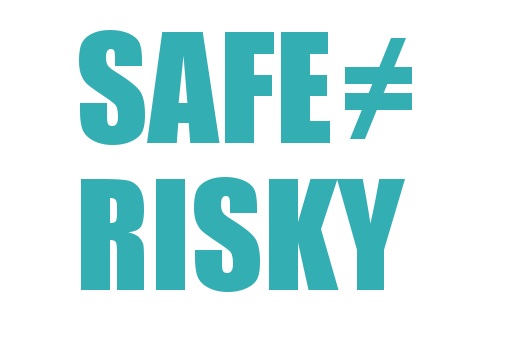10 years ago nobody were paying any special attention to parabens and especially methyl- and ethylparaben were to be found on the majority of ingredient lists for skincare products. Nowadays, more and more products (especially in the EU) pride themselves of being paraben-free in the same way as they pride themselves of being fragrance-free. So, what has happened between then and now to cause such a dramatic change in the attitude towards parabens? And are they really dangerous and should be avoided for every cost? Below we have made a list of the parabens you should be comfortable using – as well as those (less frequently used) which you might want to avoid till more research has been published.
Function
Parabens work as preservatives in cosmetics and skincare products. As you probably know it from your refrigerator, most things with some sort of water content will spoil eventually – whether it is vegetables, meat or dairy products. The same would happen to skincare products as almost all have a discernible amount of water in them. The reason for the rotting is microorganisms and bacterial growth, which occur naturally and usually faster once the product is exposed to air. In the same way that rotten food is neither tasty nor healthy for you, spoiled skincare products can similarly pose a health risk and definitely not do your skin any good. Preservatives of some sort are thus needed to keep skincare products stable and safe to use – but the preservative itself of course also has to be safe to use.
Suspicion
Parabens have been used for decades in different cosmetic products, usually with two or more kinds of parabens present in the same product to optimize efficiency. Methyl- and ethylparaben were and are the most widely used of all parabens. The hysteria about parabens was sparked by the 2004 article with the admittedly frightening title: “Concentrations of Parabens in Human Breast Tumours” by Philippa D. Darbre et al. in Journal of Applied Toxicology (Volume 24, Issue 1, pages 5-13). And yes, there were found parabens in breast tumours, but as pointed out by the American FDA: “the study did not show that parabens cause cancer, or that they are harmful in any way, and the study did not look at possible paraben levels in normal tissue« (FDA.gov, 12/15/2014). Indeed, the scientists behind the article went out only half a year later and emphasised that “No claim was made that the presence of parabens had caused the breast cancers” (P. Darbre et al.: Reply to Alan M. Jeffrey and Gary M. Williams, Journal of Applied Toxicology,Volume 24, Issue 5, pages 303-304). But alas, things had been set in motion already; it would only be a few years before the hysteria was widespread and parabens accused of a number of maladies. Research was and is being conducted on various parabens, but for now it stands that methylparaben and ethylparaben are safe to use while other parabens might be more questionable – depending who you ask.
Which Parabens are Safe – and Which are Questionable?
It would be great if the word “paraben” could be a simple indication of whether something was safe or unsafe, but chemistry does not work that way. In fact, even the smallest change in a chemical formula can mean a world of difference to the properties and function of the molecule. Luckily, the safe parabenes are also those most widely used while the more suspicious ones are less used and even banned in some parts of the world, so it doesn’t have to be rocket science to pick and choose.
Methylparaben and Ethylparaben: A Safe Choice
Methyl- and ethylparaben are the simplest and most widely used parabens. In the European Union the maximum concentration is set to 0.4% for one of these compounds and 0.8% in a mixture of paraben esters. The 0.8% is indeed also the limit for the sum of all parabens used in a cosmetic product.
Dermotopia will include products containing methyl- and ethylparaben in our selections of the best skincare products.
Propylparaben and Butylparaben: Restrictions on Concentrations and Use
In the European Union propyl- and butylparaben have been deemed safe to use in cosmetics as long as the sum of their individual concentration does not exceed 0.19%. However, the two parabens are prohibited from being used in leave-on products for the nappy area on children younger than 3 years. In the States, the Cosmetic Ingredients Review (CIR) does not review propyl- and butylparaben differently than methyl- and ethylparaben; all are deemed safe to use in their Final Amended Report (2008) for various parabens. If you are a concerned parent, you might want to follow the European example and avoid nappy products with these ingredients.
Dermotopia might include products containing propyl- and butylparaben in the selections of best skincare products, if the concentrations seem to be low enough to comply with European standards.
Isopropylparaben, Isobutylparaben, Phenylparaben, Benzylparaben and Pentylparaben: Banned in Certain Countries.
Isopropyl-, isobutyl-, phenyl-, benzyl-, and pentylparaben have all been banned by the EU and the ASEAN countries (including Singapore, Indonesia and Thailand among others), so you might want to avoid cosmetics and skincare products containing these. But again, the American CIR did not distinguish between this group and the four abovementioned parabens; all were deemed safe in the Final Amended Report (2008).
Dermotopia will not include products with one or more of these five parabens in our selections of the best skincare products.
You might also find these posts interesting:

Fragrance in Skincare Products

Best Micellar Waters for Sensitive Skin

Alcohol in Skincare Products

The Best BB Creams

The Best AHA Exfoliants

The Best Sun Creams for Face and Body

Methylisothiazolinone: A Risky Preservative

The Best BHA Exfoliants

Dermotopia is on Facebook!

Best Pressed Mineral Powder Foundations

